new posts in all blogs
Viewing: Blog Posts Tagged with: j nonfiction, Most Recent at Top [Help]
Results 1 - 25 of 87
How to use this Page
You are viewing the most recent posts tagged with the words: j nonfiction in the JacketFlap blog reader. What is a tag? Think of a tag as a keyword or category label. Tags can both help you find posts on JacketFlap.com as well as provide an easy way for you to "remember" and classify posts for later recall. Try adding a tag yourself by clicking "Add a tag" below a post's header. Scroll down through the list of Recent Posts in the left column and click on a post title that sounds interesting. You can view all posts from a specific blog by clicking the Blog name in the right column, or you can click a 'More Posts from this Blog' link in any individual post.
Koko's Kitten. Francine Patterson. Photographs by Ronald H. Cohn. 1985. 32 pages. [Source: Library]
First sentence: Koko's full name is Hanabi-Ko, which is Japanese for Fireworks Child.
Premise/plot: Koko's Kitten is a nonfiction picture book for elementary-aged readers. Though the book is called "Koko's Kitten," the picture book biography (of a gorilla) tells much more than just that one little snippet of her life. It tells of how Koko was/is the subject of a special project, how she started learning sign language, the special bonds she's formed with the humans in her life, etc. The climax of this one, is, of course, how she came to have a kitten of her own.
My thoughts: I remember learning about Koko in the 1980s. And I had fond but vague memories of Koko's Kitten. I remembered she had a kitten. A kitten named All Ball. I remembered that the kitten died and she wanted a new kitten. It turns out I remembered only *some* of this one. I still like it. But it is more wordy than I remembered.
Text: 4 out of 5
Illustrations: 4 out of 5
Total: 8 out of 10
© 2016 Becky Laney of
Becky's Book Reviews
The World of Little House. Carolyn Strom Collins and Christina Wyss Eriksson. 1996. 160 pages. [Source: Library]
First sentence: We know Laura Ingalls Wilder best through her nine Little House books, which tell the story of her life as a pioneer girl.
Premise/plot: This biography of Laura Ingalls Wilder would be perfect for upper elementary or middle schoolers. In some ways it's "just" a biography, but, in other ways it's so much more than that. One thing that I loved about it, for example, is the inclusion of HOUSE PLANS for all the houses Laura Ingalls Wilder lived! That plus the inclusion of crafts and recipes and extension activities really just made me happy.
For any reader who loves the book series or even the television series, this one is a fun and easy-going read.
My thoughts: While I didn't learn anything "new" about Laura Ingalls Wilder, I found it a fun, delightful presentation of what I already knew. The only book that truly was packed with I-didn't-know that information was the recently released PIONEER GIRL. This biography shares an intended audience range of the actual books. So one could go from the series to this biography smoothly. (I can't imagine a fourth or fifth grader picking up PIONEER GIRL and finishing it. Pioneer Girl just has SO MANY footnotes.)
Easy to recommend this one!
© 2016 Becky Laney of
Becky's Book Reviews
I Am Jane Goodall. Brad Meltzer. 2016. 40 pages. [Source: Library]
First sentence: I am Jane Goodall. On my first birthday, my father bought me a cuddly toy chimpanzee named Jubilee.
Premise/plot: I Am Jane Goodall is a picture book biography of Jane Goodall for young readers by Brad Meltzer. It uses text and speech bubbles throughout to give details of her life and her work. It is packed with plenty of information, and a great message or two.
My thoughts: I found this one slightly problematic. Not because of the text itself necessarily. But because of the illustrations. Jane Goodall is illustrated exactly the same throughout the book. It doesn't matter if she's one or eighty. As a one year old, she's got white hair pulled back in a ponytail. As an adult working in the jungle, she's the exact same height as when she's one and in a baby carriage. She's surrounded by ADULTS, during ADULT WORK, supposed to be one of the best, most qualified, most experienced in her field, and she's the size of a toddler. Why is this okay?!
That being said. I found the text interesting enough.
© 2016 Becky Laney of
Becky's Book Reviews
Will's Words: How William Shakespeare Changed The Way You Talk. Jane Sutcliffe. Illustrated by John Shelley. 2016. Charlesbridge. 40 pages. [Source: Library]
First sentence: Dear Reader: We have to talk. I have failed you. I set out to write a book about the Globe Theatre and its great storyteller, William Shakespeare. About how the man was an absolute genius with words and wove those words into the most brilliant and moving plays ever written. But that's just the trouble. You see, I wanted to tell you the story in my own words. But Will Shakespeare's words are there, too, popping up all over the place. It's not my fault. Really. Will's words are everywhere. They're bumping into our words all the time, and we don't even know it.
Premise/plot: Sutcliffe's picture book for older readers does a great job introducing readers to the sixteenth century theatre. And her emphasis on "Will's Words" shows the relevance Shakespeare still has in today's world. It is part narrative. But on each spread, she focuses on words--phrases--Shakespeare either invented himself (coined) OR kept alive (sustained) through the longevity of his plays. She uses the word or phrase in her narrative, and then explains it. Each word is explained and/or defined. Sometimes this includes "what it meant then, what it means now." But she also always includes: WHERE it came from--which play, which act, which scene.
Words include:- for goodness' sake
- what's done is done
- too much of a good thing
- outbreak
- excitement
- of a sudden
- wild goose chase
- fashionable
- money's worth
- hurry
- with bated breath
- a sorry sight
- heart's content
- well behaved
- send him packing
- good riddance
- love letter
- laugh oneself into stitches
- foul play
- make your hair stand on end
- cold-blooded
- hot-blooded
- bloodstained
- dead as a doornail
- seen better days
- into thin air
- amazement
- the short and long of it
- not budge an inch
- eaten out of house and home
- green-eyed monster
- household words
My thoughts: I really loved this one. It is for older readers. I don't think the typical preschooler is going to care about the word origin of the phrase "dead as a doornail." But for older students (mid-to-upper elementary on up) what a treat!!! Be sure to watch the Horrible Histories music video about Shakespeare! © 2016 Becky Laney of
Becky's Book Reviews
Walk This World At Christmastime. Illustrated by Debbie Powell. 2016. Candlewick. 24 pages. [Source: Review copy]
First sentence: Walk this world at Christmastime. Let's take a stroll around the world, to all four corners of the globe. Peek through windows, open doors, watch as Christmastime unfolds.
Premise/plot: Readers "visit" many different countries at Christmastime. Each two-page spread takes readers to a new destination. The stops include Canada and the United States; Mexico, Bolivia, and Brazil; Nigeria, South Africa, and Ethiopia; Spain, France, Italy, and Greece; Holland, Austria, and Germany; U.K., Sweden, Norway, and Finland; Poland, Ukraine, and Russia; Lebanon, Iraq, Pakistan, and India; China, Japan, and the Philippines; Australia, New Zealand, and Samoa. Each two-page spread features a riddle, of sorts, asking readers to guess where they are. Each two spread also features a LOT of flaps to open. Behind each flap is a fact.
Some of the things we learn on this journey:
- During Las Posadas, children dress as Mary and Joseph and go from house to house asking to be let in.
- Leave out your shoes to get presents from the Three Wise Men.
- Calabar Carnival, in Nigeria, is Africa's biggest street party. Get ready for parades, masquerades, and dancing.
- An old Greek custom, recently revived, is to decorate real and model ships with lights at Christmastime.
- In Holland, leave out your clogs for Saint Nicholas. Don't forget a carrot for his horse!
- A Nutcracker doll is a traditional German gift.
- The first Christmas card was sent in the U.K. in 1843.
- In Russia, Father Frost brings children presents, accompanied by the Snow Maiden.
- In Iraq, Christian families light a bonfire and recite passages from the Bible.
- In India, banana trees are decorated for Christmas.
- The Chinese give gifts of apples on Christmas Eve.
- In Samoa, people feast on December 24, then go to church, dressed in white, on Christmas Day.
My thoughts: This one is packed with information. I definitely found it interesting. I'm not the biggest fan of lift-the-flap books. But I think this one works.
© 2016 Becky Laney of
Becky's Book Reviews
Fascinating: The Life of Leonard Nimoy. Richard Michelson. Illustrated by Edel Rodriguez. 2016. 40 pages. [Source: Review copy]
First sentence: Lenny took a deep breath and looked out at the playhouse stage.
Premise/plot: Richard Michelson has written a picture book biography of Leonard Nimoy. The book opens in 1939 with a young Lenny preparing to sing "God Bless America" at a talent show. He was the son of Russian immigrants--Jewish, and raised so. In fact, his inspiration for the Vulcan hand gesture--live long and prosper--came from a priestly blessing.
Readers learn about his interest in photography and acting. Both would be life-long pursuits and interests.
The book closes with Leonard Nimoy taking on the role of Spock and making it truly his own. The last illustrated spread depicts the first use of the "live long and prosper" from the episode Amok Time.
The next two pages fill out the rest of his life. He was an actor and a director. He was a photographer who displayed his photographs for the public, and, in fact published them as works of art. He was also an author.
The end brings a smile to my face. Before he left home, his mother encouraged him to learn to play the accordion. Acting jobs may come and go, she warned. But musicians can find a way to work. The book ends, "But he never did learn to play the accordion."
My thoughts: I LOVED this one so much. I thought it was very charming and well written. I did indeed find it fascinating. The author's note was great. I love that this book was written by one of Leonard Nimoy's close friends. I loved the personal touch--knowing that Nimoy read and approved of the project.
Text: 5 out of 5
Illustrations: 5 out of 5
Total: 10 out of 10
© 2016 Becky Laney of
Becky's Book Reviews
LEGO Knights & Castles. 2016. Scholastic. 64 pages. [Source: Review copy]
Knights and Castles is one of the first books in a Lego-themed nonfiction series published by Scholastic. The series is being marketed as "a Lego adventure in the real world."
What I liked about this one:
I enjoyed the nonfiction narrative. Both the main, flowing narrative that is simple and quick paced. And the overflow of facts found in the text of the side bars, asides, captions, etc. There is plenty of information packed into this one. And it's all appropriate for the elementary audience.
I enjoyed the layout. I liked the use of photographs, illustrations, and bright, bold colors. The book is designed to be appealing to readers. I think it works. It certainly looks nothing like the nonfiction from thirty or forty years ago.
I enjoyed two out of the three Lego features. I enjoyed the "Build it!" and Build it Bigger!" feature. I enjoyed the "Play it!" feature.
p. 15 Build it! Build a tournament area for your jousting knights!
p. 16-7 Play it! Find out about the stories of King Arthur's knights. What amazing adventures will your knights have? Do your knights argue, or are they friends? Is there a wizard in your knight world? Who is your most evil knight?
p. 29 Build it! Build a hospital for the Order of St. John to work in.
While I enjoyed the build it and play it features in Lego Planets, I really LOVED these two features in this one. I also found the narrative to be more compelling. (But that could be my love of history talking!!!)
What I didn't quite enjoy:
The illustrated Lego minifigures. I think there comes a point in your life where you grow up and grow beyond the kind of dialogue that these minifigures engage in. The speech bubbles are heavy on bad jokes and jests. It's just squirmy to read the text as as an adult. Kids, the intended audience, might have a complete different reaction.
© 2016 Becky Laney of
Becky's Book Reviews
Lego Planets: A Lego Adventure in the Real World. 2016. Scholastic. 64 pages. [Source: Review copy]
Planets is one of the first books in a Lego-themed nonfiction series published by Scholastic. The series is being marketed as "a Lego adventure in the real world."
What I liked about this one:
I enjoyed the nonfiction narrative text. The main narrative text keeps things moving. Just a few sentences per page. Each two-page spread features more text: side bars, charts, captions for photographs, etc.
I enjoyed the layout. Big, bright, bold, colorful photographs.
I enjoyed two out of the three Lego features. Some spreads include a "build it" feature. Other spreads include a "play it" feature.
p. 37 Build it! Your astronauts need a space base. Design a space station. Here are some of the important partss. Solar panels. Living quarters. Docking station. Viewing window. Laboratory. Radiator.
p. 19 Play it! Take your astronauts to the Moon and help them explore. What will they find?
p. 26 Play it! Take your rover and astronauts to Mars! It's a whole new world of adventure. What will they find on the Red Planet? Will they be safe?
What I didn't really like:
I mentioned liking two out of the three lego features of this one. The third feature, the one that predominates the book, is the dialogue between Lego minifigures. These conversations are found in speech bubbles and are heavy on bad jokes. They add no intelligence to the book, in other words.
They are illustrated minifigures, by the way.
© 2016 Becky Laney of
Becky's Book Reviews
The Hole Story of the Doughnut. Pat Miller. Illustrated by Vincent X. Kirsch. 2016. HMH. 40 pages. [Source: Review copy]
First sentence: Few remember the master mariner Hanson Crockett Gregory, though he was bold and brave and bright. But the pastry he invented more than 166 years ago is eaten daily by doughnut lovers everywhere. This is his story.
Premise/plot: Readers learn the true story behind the creation of the doughnut. Also how that story got embellished through the years into something more of a legend.
My thoughts: I liked it. I really did. I can't say that I loved, loved, LOVED it. But it was lively, engaging, entertaining, not particularly moralistic or educational. I don't remember picture book biographies being this entertaining when I was a child. So it's easy to recommend.
Text: 3.5 out of 5
Illustrations: 4.5 out of 5
Total: 8 out of 10
© 2016 Becky Laney of
Becky's Book Reviews
The Wildest Race Ever. Meghan McCarthy. 2016. Simon & Schuster. 48 pages. [Source: Library]
First sentence: The first Olympic marathon held in America happened on August 30, 1904, in Saint Louis, Missouri.
Premise/plot: This nonfiction picture book tells the wild-but-true story of the first Olympic marathon. McCarthy introduces us to ten runners out of the thirty-two that started the race. This story has plenty of twists and turns. It's never dull!
My thoughts: I really enjoyed this one. It appears to be well-researched. A select bibliography is included. And a link is provided for a full bibliography. It is well-written in my opinion! The story is lively and fun. I really liked the end papers!
It is probably best suited for slightly older readers. (Elementary perhaps instead of preschool.) It might make for a slightly awkward group read-aloud because there are a lot of sidebars and such in addition to the main narrative.
Text: 5 out of 5
Illustrations: 3 out of 5
Total: 8 out of 10
© 2016 Becky Laney of
Becky's Book Reviews
What Are The Summer Olympics? Gail Herman. Illustrated by Stephen Marchesi. 2016. 112 pages. [Source: Library]
I enjoyed reading Gail Herman's What Are the Summer Olympics? This short little nonfiction book for young(er) readers (think elementary school) covers all the basics. It provides a nice, little overview of the Olympics. Readers don't learn all there is to know about any one sport--or event--but readers learn a little bit about many of the most popular events. The chapters are actually arranged decade by decade. Each chapter typically covers two or three sports.
For example, the ninth chapter focuses on the 1980s. That chapter covers the U.S.A's boycott of the 1980 games, introduces readers to Mary Lou Retton (gymnastics), Carl Lewis (track), and Greg Louganis (diving).
Because over a hundred years worth of sports history is covered in this little volume, there isn't a lot of depth and substance. The book is a little over a hundred pages in length. BUT the book has a lot of illustrations.
Is it as FUN as Horrible Histories'
Flame?!?! Sadly, no. But the book and song go VERY well together. The book, of course, covers A LOT more than any song parody could ever do it.
© 2016 Becky Laney of
Becky's Book Reviews

By:
Becky Laney,
on 8/1/2016
Blog:
Becky's Book Reviews
(
Login to Add to MyJacketFlap)
JacketFlap tags:
Nonfiction,
review copy,
music,
biography,
j nonfiction,
Houghton Mifflin Harcourt,
mg nonfiction,
2016,
books reviewed in 2016,
Add a tag
Let Your Voice Be Heard: The Life and Times of Pete Seeger. Anita Silvey. 2016. HMH. 112 pages. [Source: Review copy]
First sentence: Pete Seeger became the most important folk singer of the twentieth and twenty-first centuries. But he might have chosen a very different path. Although his grandfather made a fortune from sugar refining in Mexico, Pete became an advocate for underpaid workers. Though he came from financial privilege, he identified with those who had to make a living. He fought for the oppressed and poor all his life.
Premise/plot: Let Your Voice Be Heard is a biography of Pete Seeger written for children. (I'd say eight to twelve, if I had to put a label on it.) The biography is great at putting Pete Seeger's life into context for better understanding. Perhaps the author wanting to keep this one short and accessible for her audience, did not fully cover his life and music. It is not an exhaustive book on the subject. But a good, basic introduction.
My thoughts: I definitely found this one to be fascinating. I knew next to nothing about Pete Seeger before picking this one up. (I'm certainly no expert in folk music. My only familiarity at all coming from the music of Peter, Paul, and Mary.) I thought it was very well-written.
© 2016 Becky Laney of
Becky's Book Reviews

By:
Becky Laney,
on 7/29/2016
Blog:
Becky's Book Reviews
(
Login to Add to MyJacketFlap)
JacketFlap tags:
World War II,
2005,
j nonfiction,
Houghton Mifflin Harcourt,
mg nonfiction,
review copy,
2016,
books reviewed in 2016,
books reread in 2016,
Paris in July,
Add a tag
The Journey That Saved Curious George. Louise Borden. 2016. HMH. 96 pages. [Source: Review copy]
First sentence: For many years, I was intrigued by the story of Margret and H.A. Rey's flight from Paris on bicycles in June 1940.
Premise/plot: This children's nonfiction book is just right for elementary readers. It begins by providing background and context for young readers. Hans Augusto Reyersbach and Margarete Waldstein grew up in Germany. Both were Jewish. At some point in the 1920s, he moves to Rio de Janeiro. She follows a little while after. They meet again there, and fall in love. Paris is one of the stops on their honeymoon--they are Brazilian citizens now--and Paris is where they decide to remain. They work many happy years together in Paris. But their work--and their lives--are threatened when World War II goes from being something you read about in the papers--to something happening a few miles outside the city limits.
As Jews, they are at great risk if they remain in Paris and Paris is captured by the Nazis. But. For better or worse. They waited a little too long to leave the city...in an easy way. The last rush sees them desperate to find two bicycles. I believe the book says he had to build the bicycles himself from parts. But it isn't just a story about saving the authors' lives, it's a book celebrating the manuscript that would become Curious George. That was one of the possessions that they took with them--on their bikes. Of course what you may not know is that "George" wasn't George just yet. The monkey was originally called Fifi. And publishers had already agreed to publish the book before they made their flight...
The book focuses on H.A. and Margret Rey, their work as writers, and how the war effected their lives.
My thoughts: This is a very enjoyable read. I loved how the author was able to reconstruct their lives and give readers a behind-the-scenes look into the writing and illustrating of books. The book felt personal, but, always appropriate.
I would definitely recommend this one.
© 2016 Becky Laney of
Becky's Book Reviews
Hill of Fire. Thomas P. Lewis. Illustrated by Joan Sandin. 1971. 64 pages. [Source: Bought]
First sentence: Once there was a farmer who lived in Mexico. He lived in a little village, in a house which had only one room.
Premise/plot: Pablo's father, a farmer, is always, always saying nothing EVER happens on their farm, in their village. Every day is the same: dull and predictable. But one day SOMETHING happens, and Pablo witnesses it all. The two are in their field plowing when suddenly a VOLCANO begins to form. What started as crack in the ground soon becomes a big volcano--an erupting volcano. From the moment "it" appears--the crack-soon-to-be-a-volcano--Pablo runs to warn the villagers. It isn't long before the villagers are fleeing the village for safety. Indeed the whole village will have to be relocated and rebuilt.
This is a nonfiction early reader set in Mexico in 1943. A father and son truly witnessed the formation of a new volcano. That is far from an ordinary occurrence. The author's note states that human eyes--so far as we know from records--have only witnessed two such events. (Paricutin in Mexico and Tenerife in the Canary Islands.)
My thoughts: I remembered this book from Reading Rainbow. I'm not sure I ever read it myself until I found it in my local charity shop. Even though it was not in the best shape--a discarded library copy from Connecticut of all places--I knew I had to have it. The story was just as absorbing as I remembered it. Definitely recommended.
© 2016 Becky Laney of
Becky's Book Reviews

By:
Becky Laney,
on 5/9/2016
Blog:
Becky's Book Reviews
(
Login to Add to MyJacketFlap)
JacketFlap tags:
books reviewed in 2016,
biography,
picture books,
picture books for older readers,
j nonfiction,
Houghton Mifflin Harcourt,
review copy,
2016,
2016 Cybils-Eligible,
Add a tag
Nadia: The Girl Who Couldn't Sit Still. Karlin Gray. Illustrated by Christine Davenier. 2016. HMH. 40 pages. [Source: Review copy]
Premise/plot: A picture book biography of Nadia Comaneci.
My thoughts: First, I just want to say that I want--no, I NEED--more picture books about gymnastics. Or early readers. Or chapter books. Or, you know, novels. And while I'm at it, I'll put in a request for books about ice skating. A picture book about the 1996 U.S. Gymnastics team would be GREAT fun I think!
Second, I just have to say that I really enjoyed this picture book biography of Nadia Comaneci! It is a very age-appropriate biography I must say. It is set in Romania in the 1960s and 1970s. (But the focus is never on politics or hardships or possible reasons why she might have defected from her country.) Readers meet a young Nadia and her coaches Bela and Marta Karolyi. She began doing gymnastics at the age of 6. Over half the book focuses on the 1976 Olympic Games. The book ends with her returning home after winning at the Olympics. She was 14 years old, I believe. I want to say that these days you have to be at least sixteen in order to compete at the Olympics. A timeline will catch adults up on her life story.
One thing I did appreciate was the source notes provided at the end of the book. So often picture book biographies fail to show their research.
This one is easy to recommend.
Text: 5 out of 5
Illustrations: 3 out of 5
Total: 8 out of 10
© 2016 Becky Laney of
Becky's Book Reviews
Finding Winnie: The True Story of the World's Most Famous Bear. Lindsay Mattick. Illustrated by Sophie Blackall. 2015. Little, Brown. 56 pages. [Source: Library]
First sentence: "Could you tell me a story?" asked Cole.
Premise/plot: Cole, the author's young son, asks for a story--a TRUE story; he wants a true story about a BEAR. What the author shares with her son--in the story--and with readers--in the book--is indeed a true story. The story of how a young soldier on his way to war--the author's great-great grandfather finds a bear at a train station, buys it, and takes it with him. The bear's name is WINNIE. And when Harry Colebourn goes to the front, he leaves Winnie in the London Zoo. Many people loved going to see Winnie, but, the best known perhaps is A.A. Milne's young son.
My thoughts: I love several things about this one. I love the personal connection. The author is sharing her own family history with readers. Older readers may enjoy looking at the album at the back of the book. Many photos and captions are included. This grounds the book very well as being a TRUE story. It brings the story to life.
But I also enjoy the framework of this one. It is a book that celebrates storytelling and families. I believe it is a bedtime story he's asking for. I love the idea of parents sharing their own stories with children, and true stories at that! Throughout the story, readers hear the mother and son chatting. It works.
I also just genuinely love the writing of this one!
Text: 5 out of 5
Illustrations: 5 out of 5
Total: 10 out of 10
© 2016 Becky Laney of
Becky's Book Reviews
Voice of Freedom Fannie Lou Hamer. Carole Boston Weatherford. Illustrated by Ekua Holmes. 2015. Candlewick. 56 pages. [Source: Library]
Voice of Freedom: Fannie Lou Hamer: The Spirit of the Civil Rights Movement is a book both easy to categorize and difficult. It is nonfiction. It is a biography of Fannie Lou Hamer--a picture book biography. A biography written in verse. So it's poetry too. And it's about the civil rights movement. Yes, the focus is on Fannie Lou Hamer's role in the civil rights movement, but, it isn't as if it's her story alone. It is so much more than that. The fact that it is a picture book biography written in verse about the civil rights movement makes it a great example of a picture book for older readers. (And the fact that it's about the civil rights movement, and, a heroine of the movement, makes it a great example of a diverse title and one highlighting a remarkable woman.) So there are at least half a dozen reasons why one would want to pick this one up and read it.
But could I be forgetting the most important reason to seek this one out to read?! It is a GREAT read. It was fascinating, absorbing, compelling. I've read a dozen or so books--mainly for young readers, I admit--about the civil rights movement, yet I still found myself learning things I hadn't known before. I love to learn as a I read. And it is so beautifully written, the narrative voice is just outstanding. A typical spread includes one poem and an illustration by Ekua Holmes.
Would I recommend it??? YES!
© 2016 Becky Laney of
Becky's Book Reviews
Trombone Shorty. Troy Andrews. Illustrated by Bryan Collier. 2015. Harry N. Abrams. 40 pages. [Source: Library]
Trombone Shorty is a picture book biography of Troy "Trombone Shorty" Andrews, a jazz musician from New Orleans. It is illustrated by Bryan Collier. Perhaps I should say BEAUTIFULLY illustrated by Bryan Collier. I have a weakness for illustrations this beautiful. I do. I can't help it.
I also tend to read picture book biographies of jazz musicians. If you read a lot of picture books, you know that there are new ones every year. If you don't read a lot of picture books, well, you might just be surprised at how many picture books are biographies of musicians past and present--not just jazz musicians, but all sorts of musicians. I'm not sure why, but, I think it is perhaps because picture books lend themselves so very well to rhythm and rhyme.
So did I enjoy this picture book? Yes! Very much. I loved the illustrations, as I've mentioned. And I love the focus on mentoring and legacies and heritage. One of the points the author stresses is that musicians help younger musicians, they should help younger musicians. They can teach; they can inspire; they can provide opportunities. He was helped along from a very young age. And this picture book pays tribute to those who helped him, who influenced him, who guided him. The author's note also mentions how he is eager to do the same for a new generation of musicians.
This one is definitely easy to recommend.
© 2016 Becky Laney of
Becky's Book Reviews

By:
Becky Laney,
on 1/29/2016
Blog:
Becky's Book Reviews
(
Login to Add to MyJacketFlap)
JacketFlap tags:
books reviewed in 2016,
Nonfiction,
Holocaust,
World War II,
YA nonfiction,
j nonfiction,
mg nonfiction,
2002,
review copy,
2016,
Add a tag
Hana's Suitcase. Karen Levine. 2002/2016. Crown Books. 144 pages. [Source: Review copy]
Would I recommend Hana's Suitcase by Karen Levine? Yes, yes, a thousand times yes. This would be a great introduction to the subject of the Holocaust for elementary students. (My first "Holocaust book" was The Hiding Place by Corrie ten Boom. Do you remember your first Holocaust book?) One reason why I think it would be a good fit for young readers is the way the subject is approached. It is unusual and unique. It is a story about children learning about the Holocaust for the first time. It is about the learning process--the research process as well.
Chapters alternate between the present and the past. The "present" story begins with an empty suitcase, "Hana's" suitcase. This is an object found in a Japanese Holocaust museum. The children--and the director--are eager to know WHO IS HANA? They know her birth date, that she was Jewish, that she ended up in a Nazi concentration camp. But who was she? what did she look like? what was her family like? what was her childhood like? What happened to her? Did she survive? Did she die?
The present chapters narrate this learning-process, this investigation. I love that it illustrates history-coming-to-life, how fun and exciting history can be, even how relevant and important it can be to ask questions, to be persistent, to follow leads, etc.
There are also chapters set in the past that tell Hana's story, and tell it almost from her point of view. Readers ultimately learn that much of this information came from her brother who did survive the war. Because the chapters alternate, readers will get the answers to some questions before the people in the book.
I liked how these two stories come together. This one is worth reading.
© 2016 Becky Laney of
Becky's Book Reviews
Can't You Make Them Behave, King George? Jean Fritz. Illustrated by Tomie dePaola. 1977/1996. 48 pages. [Source: Library]
I am so glad I read Jean Fritz's Can't You Make Them Behave, King George? I found this one to be a delight. And not just because I happen to
love Horrible Histories' Born 2 Rule. (I should probably make that love, love, love, LOVE. I love Horrible Histories, the show in general, and the songs very, very much.) I've almost always enjoyed studying British literature and British history more than American. Though in the case of this book, you get a bit of both!
Can't You Make Them Behave, King George? is about the reign of George III. How he came to the throne, what kind of king he was, what he was remembered for, etc. A lot of the focus is on the conflict, the war, with the American colonies. But it isn't just about the American Revolution either. Plenty of attention is placed on the royal family which I loved.
This biography is definitely for mid-to-upper elementary students. A good read aloud for first grade it isn't! There is a lot of text per page, but, there are also plenty of illustrations. And the illustrations are by Tomie dePaola. Some are in color, others are in black and white. But the important thing is that there are illustrations. I've mentioned it before, but, it's worth repeating. When I had to choose a nonfiction book for report, required reading, I decided which book based on the length and the number of illustrations. This one would have been well received by me!
I read a reprint edition that came out circa 2009. It was originally published in 1977.
© 2015 Becky Laney of
Becky's Book Reviews
Eat Your U.S. History Homework. Ann McCallum. 2015. Charlesbridge. 48 pages. [Source: Review copy]
I love the premise behind Ann McCallum's Eat Your U.S. History Homework. I think it is a clever idea to write a cookbook with American History in mind.
The book only covers early American history. The first recipe--around the times of the Pilgrims settling America--is "Thanksgiving Succotash." The last recipe--around the time of the American Revolution--is for "Independence Ice Cream." There are six recipes in all.
The topics or subjects these recipes are supposed to supplement: Pilgrims at Plymoth, 1620; The Thirteen Original Colonies, 1607-1776; The French and Indian War, 1754-1763; Slaves and the Southern Planation, 1619-1863; The American Revolution, 1775-1783; The Declaration of Independence, 1776.
Some recipes you might recognize under another name. For example: "Revolutionary Honey-Jumble Cookies" and "Lost Bread" are snickerdoodles and french toast.
I like the focus on food. I like the historical tidbits. I like everything but the illustrations.
© 2015 Becky Laney of
Becky's Book Reviews
Beatrix Potter and Her Paint Box. David McPhail. 2015. Henry Holt. 40 pages. [Source: Library]
First sentence: Beatrix Potter was born on July 28, 1866, in London, England.
Premise/plot: David McPhail has written a picture book biography about Beatrix Potter, author-illustrator of dozens of picture books including Peter Rabbit. The book focuses on her childhood through the publication of her first few books.
My thoughts: I enjoyed this one very much. I really liked the illustrations. And I thought the text was very reader-friendly. It wasn't text-heavy. It was just the right amount of text for the target audience. Overall, a very nice biography.
Text: 4 out of 5
Illustrations: 4 out of 5
Total: 8 out of 10
© 2015 Becky Laney of
Becky's Book Reviews

By:
Becky Laney,
on 10/26/2015
Blog:
Becky's Book Reviews
(
Login to Add to MyJacketFlap)
JacketFlap tags:
Simon and Schuster,
YA nonfiction,
verse novel,
j nonfiction,
mg nonfiction,
library book,
2015,
books reviewed in 2015,
Nonfiction,
autobiography,
memoirs,
Add a tag
Enchanted Air. Margarita Engle. Illustrated by Edel Rodriguez. 2015. Simon & Schuster. 208 pages. [Source: Library]
Did I enjoy Margarita Engle's Enchanted Air? A thousand times yes! I don't remember when I first discovered Engle's verse novels, I just remember it was love at first sight from the first book on. Every novel of hers which I've read, I've ended up absolutely loving. I really should treat myself to rereading all of her novels.
Enchanted Air is the author's memoir of her first fourteen years. It is all in verse; wonderful, glorious verse as only she can write. She writes of her travels back and forth from the United States and Cuba. (In addition to writing about other family travels, vacations, if you will.) She writes of various moves within the U.S, all in California, I believe. She writes of summer days and school days. Of belonging, wanting to belong, needing to belong. Of uncertainty, confusion, and on the opposite extreme: JOY. Joy of knowing, of discovering, of loving, of living, of just being. The focus is on herself and on her family. She grew up during the "Cold War." And she shares with readers her experiences; how upsetting and confusing it could be to grow up Cuban American at a time when Cuba was very much THE ENEMY. She also writes about her love of reading, writing, and storytelling.
From "Learning" (p. 134)
At home, I scribble tiny poems
all over the walls of my room.
Inside those miniature verses,
I feel safe, as if I am a turtle,
and the words
are my shell.
"More and More Stories" (p. 82
I find it hard to believe
that I am surviving
a whole summer
without a library
for finding
the familiar
old magic
of books.
But storytelling seems
like magic too--a new form
that is also
ancient
at the same time.
Will I ever be brave enough
to tell old-new tales
in my own way?
From "Refuge" (p. 54)
When I climb a tree, I take a book with me.
When I walk from school, I carry
my own poems, inside my mind,
where no one else
can reach the words
that are entirely
completely
forever
mine.
© 2015 Becky Laney of
Becky's Book Reviews

By:
Becky Laney,
on 10/21/2015
Blog:
Becky's Book Reviews
(
Login to Add to MyJacketFlap)
JacketFlap tags:
Nonfiction,
YA nonfiction,
mg nonfiction,
review copy,
Candlewick,
j nonfiction,
2015,
2015 Cybils-eligible,
books reviewed in 2015,
Add a tag
Book, My Autobiography. John Agard. Illustrated by Neil Packer. 2015. Candlewick. 144 pages. [Source: Review copy]
First sentence:
My name is Book and I'll tell you the story of my life. In good time you'll be hearing about clay tablets, the invention of the alphabet, parchment, manuscripts that light up, libraries, and all that kind of stuff. But my story goes even further back. Before Book, there was Breath. Book has written an autobiography. He wants you--his readers--to know his life story: from his earliest beginnings to the present day. (Yes, book will let you know his thoughts on e-books.) It is written in a casual, conversational style. It includes some detail, but, it's not heavy on detail either, perhaps aiming for enough information to be entertaining but not so much that readers are tempted to skip or skim.
At times, I really liked the style of this one. For example:
It must have been fun being a little letter in those days, with different people taking you and shaping you to their own language--straightening you here, curving you there, as they saw fit. Even writing you in all directions, right to left, left to right, not to mention downward and upward. A page must have felt like a trampoline. (25)
But I wouldn't say that the reading experience cover-to-cover was all that magical. The book was good, but, not GREAT for me.
Readers learn some facts about the history of the book, the written word. Quotes and poems about books and reading are shared throughout.
© 2015 Becky Laney of
Becky's Book Reviews

By:
Becky Laney,
on 10/12/2015
Blog:
Becky's Book Reviews
(
Login to Add to MyJacketFlap)
JacketFlap tags:
picture books,
Nonfiction,
picture books for older readers,
j nonfiction,
review copy,
Harry N. Abrams,
2015,
2015 Cybils-eligible,
books reviewed in 2015,
Add a tag
Frankie Liked To Sing. John Seven. Illustrated by Jana Christy. 2015. Harry N. Abrams. 32 pages. [Source: Review copy]
First sentence: Frankie didn't act like other kids. Frankie was always singing. Frankie didn't look like the other kids in Hoboken, New Jersey, either. He was scrawny and his mom liked to dress him up fancy. She wanted Frankie to stand out from the crowd.
I loved, loved, loved this picture book biography of Frank Sinatra by John Seven. I did. I love, love, love the music of Frank Sinatra. I've loved it for years and years. Yet I've never thought to read more about him, and, never imagined that there would ever be a picture book biography written about him. I am so glad Seven chose to write about Sinatra!!! The narrative is very friendly and casual. It includes an author's note, bibliography, and a playlist for young listeners.
I may have gotten a little giddy when I saw the reference to High Society. Though the movie isn't mentioned by name, it is clearly referenced in the illustrations. High Society is one of my most favorite, favorite, favorite movies. Bing Crosby and Frank Sinatra together on screen. AND LOUIS ARMSTRONG TOO. How can it get better than High Society?!?!
Last sentence: Frankie's still singing. Can you hear him?
One of the last images you see is the illustrated Frank telling you, "May you live to be one hundred, and may the last voice you hear be mine."
The illustrations are by Jana Christy. They were very well done. I especially liked the cover.
There was just something oh-so-right about this one.
© 2015 Becky Laney of
Becky's Book Reviews
View Next 25 Posts



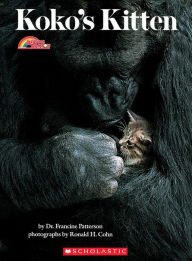
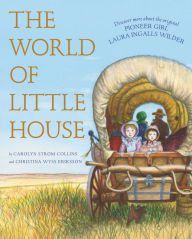

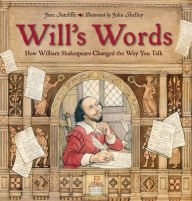





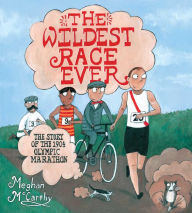

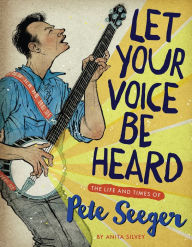

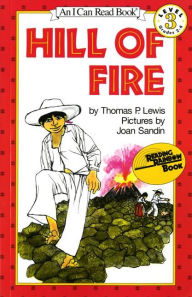

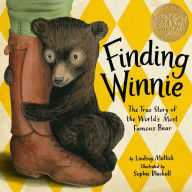
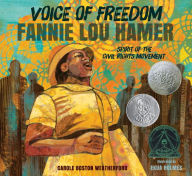

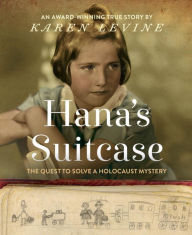
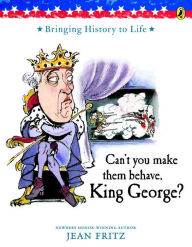




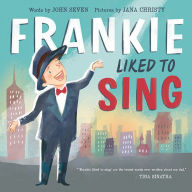
What a wonderful way to introduce young people to Shakespeare! Through phrases they still hear and use every day.